Mongolia is a land of great beauty and biodiversity. The country’s diverse landscape, ranging from the Gobi Desert to the Altai Mountains and lush steppe grasslands, is home to an abundant variety of bird species.
From the majestic Lammergeier vulture to the secretive Demoiselle Crane, Mongolia offers a unique opportunity to observe a wide variety of bird species in their natural habitats.
1. Mongolian Ground Jay
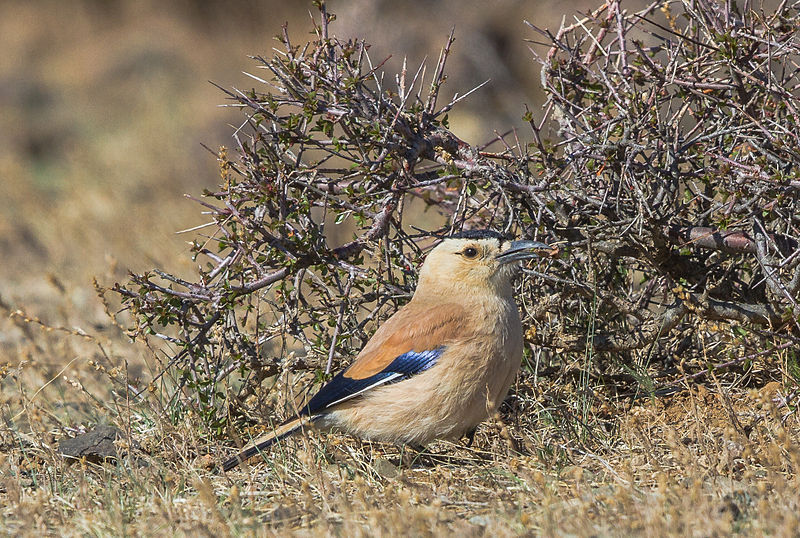
The Mongolian ground jay, also known as Henderson’s ground jay, is a species of bird in the Corvidae family. It has an iridescent blue primary feathers and black stripe on its forehead with a long curved beak.
This beautiful bird can be found inhabiting arid regions located in Central Asia such as Mongolia, China, Russia and Kazakhstan.
Interestingly enough females tend to spend more time foraging than males do which makes sense considering they are responsible for raising their young.
This adaptable creature is capable of making itself at home amongst rocky outcrops and cliffs or even desert-like habitats where it will build nests made from small stones glued together by mud.Scientific classification:
| Kingdom | Animalia |
| Phylum | Chordata |
| Class | Aves |
| Order | Passeriformes |
| Family | Corvidae |
| Genus | Podoces |
| Species | P. hendersoni |
2. Saker Falcon
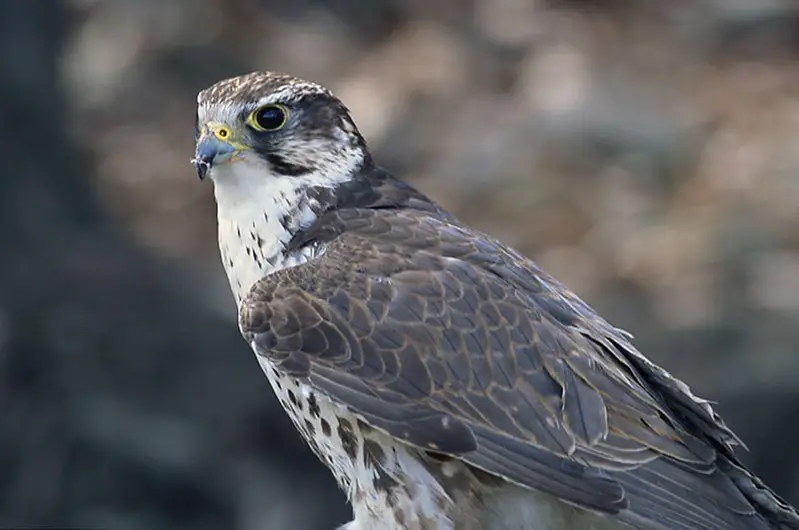
The saker falcon is a large species of falcon that is found across the Palearctic from central Europe all the way to Manchuria.
It typically migrates, except for in southern parts of its range where it winters in Ethiopia, Arabia, northern Pakistan and China.
This majestic bird has been designated as the national bird of Hungary, United Arab Emirates and Mongolia due to its beauty and gracefulness.
Its plumage can be brownish-grey or light grey with dark spots while they have bright yellow eyes which contrast their feathers beautifully.
They are also quite agile when flying at high speeds with wingspan ranging between 1-1.5 m long – perfect for soaring.Scientific classification:
| Kingdom | Animalia |
| Phylum | Chordata |
| Class | Aves |
| Order | Falconiformes |
| Family | Falconidae |
| Genus | Falco |
| Subgenus | Hierofalco |
| Species | F. cherrug |
3. Demoiselle Crane
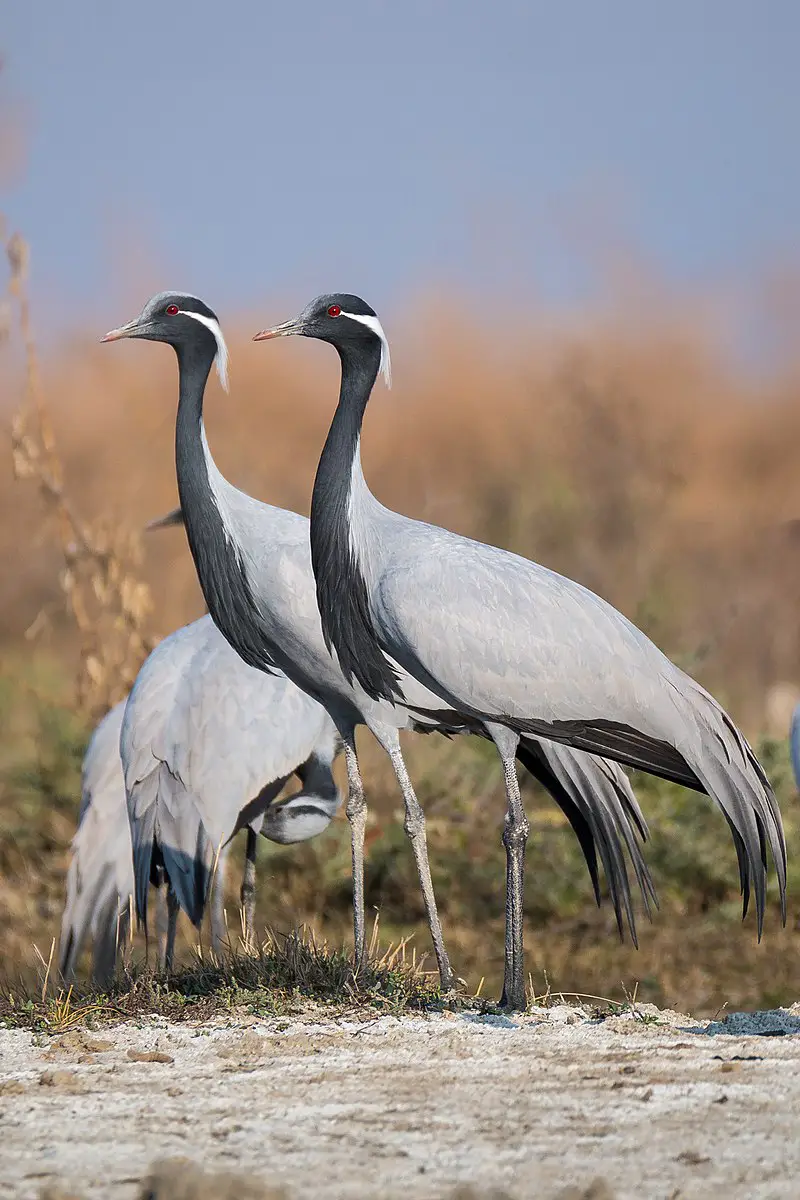
The Demoiselle Crane, scientifically known as Grus virgo, is a species of crane found in Central Europe and parts of Siberia. They range from the Black Sea to Mongolia and northeastern China.
A small breeding population can be also found in Turkey. These cranes are migratory birds; those living in western Eurasia will spend wintertime in Africa while the Asian populations fly south to India for warmer climates during cold months.
The bird stands at around 1 meter tall with white feathers on its face, neck and breast contrasting against an overall grey body plumage that gives it a unique appearance among other crane species.
Its long legs make them capable of wading through wetlands where they feed on insects, worms and aquatic vegetation when available.
Their calls sound like loud trumpeting which often signals their presence over wide areas even before sighting them.Scientific classification:
| Kingdom | Animalia |
| Phylum | Chordata |
| Class | Aves |
| Order | Gruiformes |
| Family | Gruidae |
| Genus | Grus |
| Species | G. virgo |
Also Featured In: Turkey Birds You Should Know, Birds that Live in Rajasthan
4. Oriental Plover
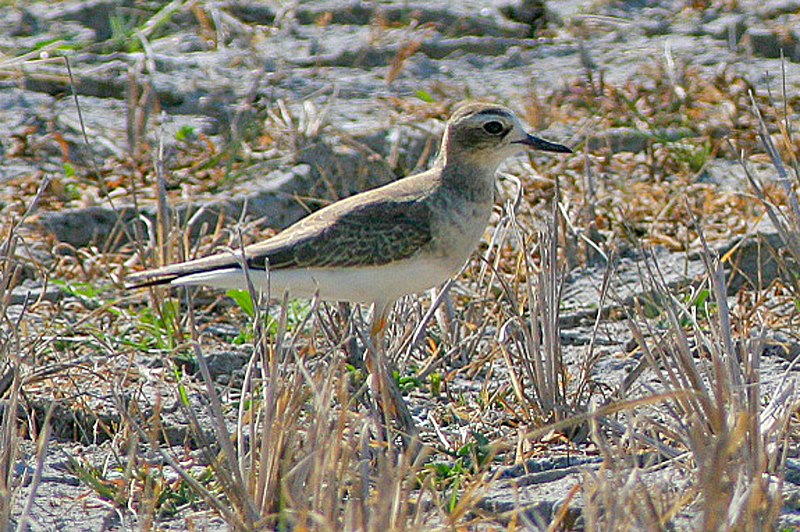
The Oriental Plover is a medium-sized bird that belongs to the family Charadriidae. It has striking plumage with white faces, throats and fore-crowns while grey brown hind-crowns, hind necks and napes are seen on their backs.
These birds breed in parts of China and Mongolia during springtime before migrating southwards towards Indonesia, New Guinea as well as northern Australia for non-breeding season in autumn.
They feed mainly on insects which they pick from mudflats or ploughed fields but may also eat worms or small crustaceans occasionally.
Believed to be monogamous creatures by nature, these birds form long term pair bonds leaving them vulnerable when one mate dies due to natural causes like old age or predation by predators such as hawks and foxes etc.
Despite being listed under ‘Least Concern’ category by IUCN Red list due to stable population numbers across its range; habitat degradation caused by human activities still threatens it survival rates significantlyScientific classification:
| Kingdom | Animalia |
| Phylum | Chordata |
| Class | Aves |
| Order | Charadriiformes |
| Family | Charadriidae |
| Genus | Charadrius |
| Species | C. veredus |
Also Featured In: Birds that Commonly Found in Bali,
5. Steppe Eagle
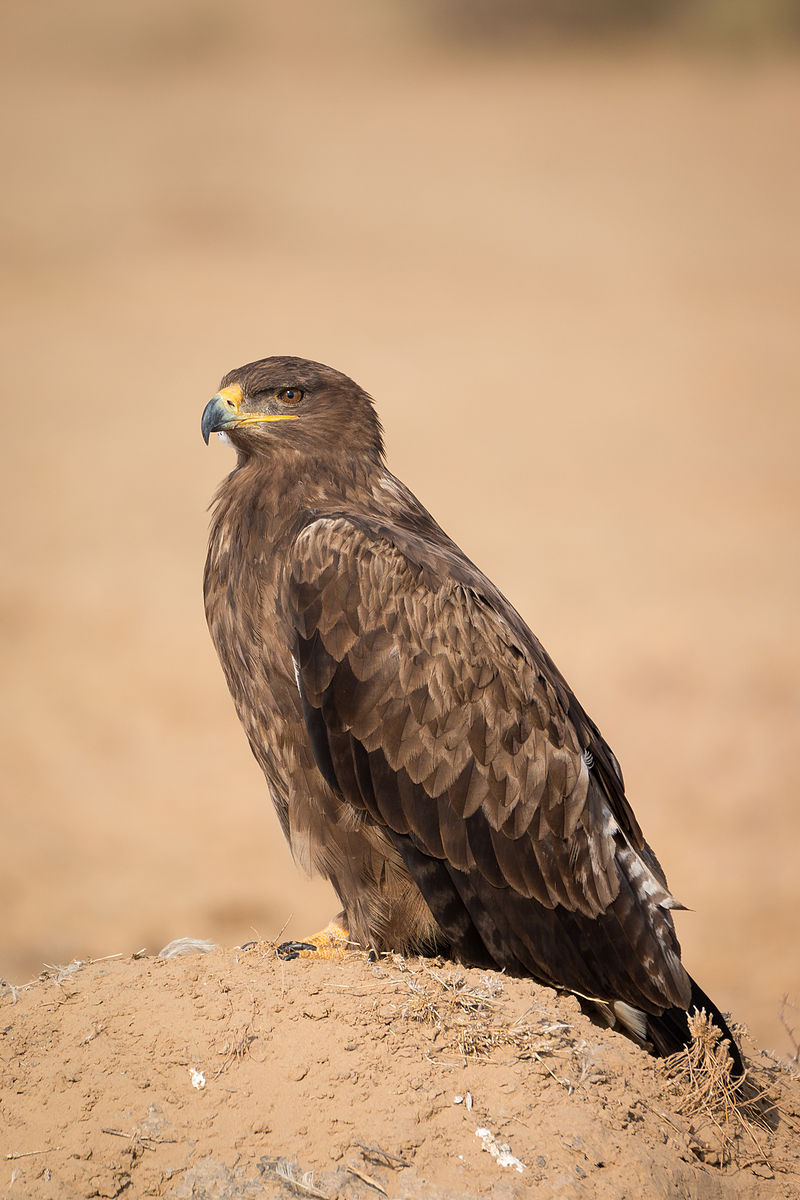
The Steppe eagle is a large bird of prey belonging to the family Accipitridae. With its well-feathered legs, it is classified as part of the subfamily Aquilinae or “booted eagles”.
It was once thought to be closely related to the Tawny Eagle but now they are considered distinct species.
This majestic creature has powerful talons used for catching and tearing apart their food such as small mammals and birds, reptiles and amphibians.
They have an impressive wingspan usually measuring from 1 meter -1.5 meters in length with distinctive brownish plumage on top while having off white colouring underneath them which helps camouflage itself when flying over open fields looking for its next meal.
The Steppe Eagles also build larger nests than other species at up 10 feet wide made out twigs that provide safety and protection during breeding season.Scientific classification:
| Kingdom | Animalia |
| Phylum | Chordata |
| Class | Aves |
| Order | Accipitriformes |
| Family | Accipitridae |
| Genus | Aquila |
| Species | A. nipalensis |
6. Altai Snowcock
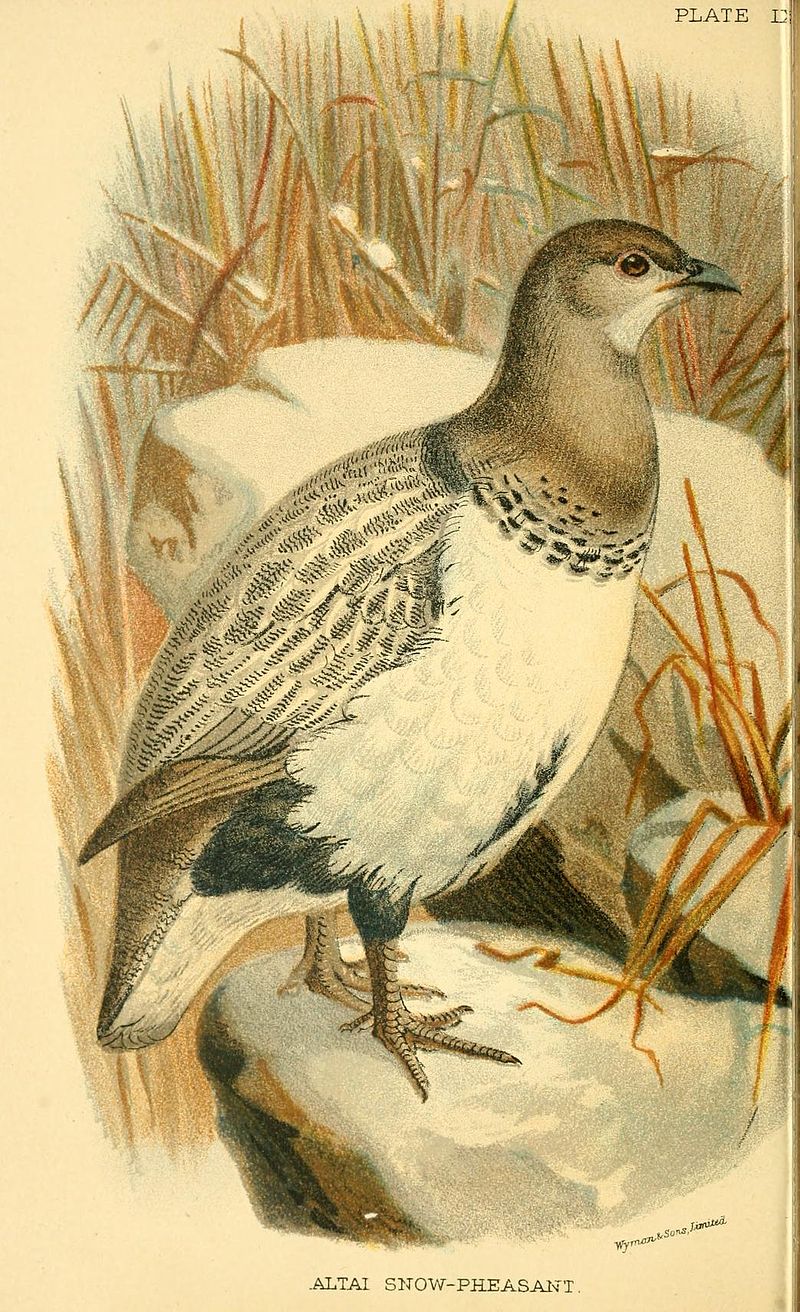
The Altai snowcock is a species of bird that resides in western Mongolia and areas adjacent to China, Kazakhstan, and Russia. It lives in boreal forests and its first description was made by Frederic Gebler back in 1836.
He was an experienced doctor as well as naturalist who spent 40 years exploring the region it inhabits.
This grayish-brown feathered creature has black barring on its tail feathers with white spots underneath them; their wings are also decorated with both light browns, whites and blacks for camouflage among the trees they reside in.
The males possess a beautiful display of colorful plumes during mating season which help attract females into forming monogamous pairs for life once found.
During summer months these birds feed mainly on insects but switch to vegetation such as grasses when winter approaches due to temperature drops making flying difficult if not impossible at times depending on conditions outsideScientific classification:
| Kingdom | Animalia |
| Phylum | Chordata |
| Class | Aves |
| Order | Galliformes |
| Family | Phasianidae |
| Genus | Tetraogallus |
| Species | T. altaicus |
7. Pallas’s Sandgrouse
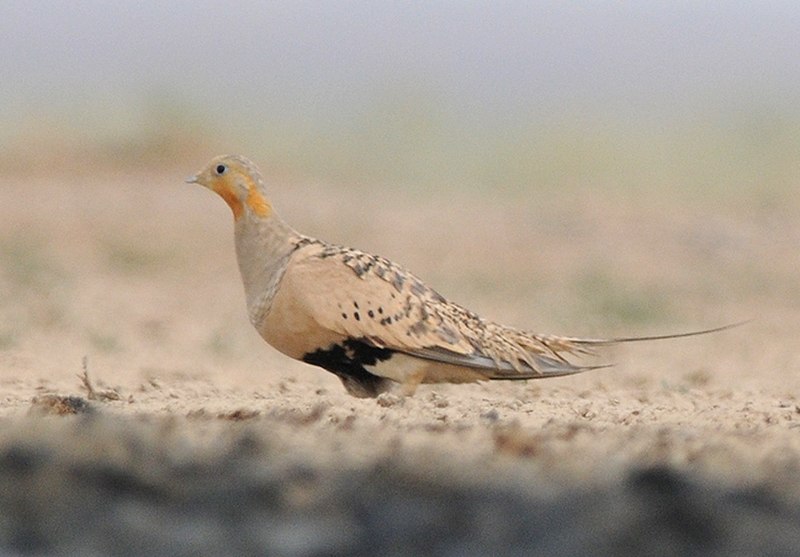
Pallas’s sandgrouse is a medium to large bird in the sandgrouse family and named after German zoologist Peter Simon Pallas. It was first mentioned by Marco Polo around 1300 as Bargherlac, from Turkmen bağırlak.
Its scientific name, Syrrhaptes paradoxus (S. pallasii), comes from Ancient Greek words meaning ‘paradoxical plover’.
This species has several distinctive features: it prefers open habitats with sparse vegetation.
Its wings are short but powerful for fast flight; and males have special feathers on their belly that can soak up water which they later transfer to chicks or other members of the flock via special tongue movements.
These fascinating birds are an important part of our natural history and should be appreciated for all they bring us.Scientific classification:
| Kingdom | Animalia |
| Phylum | Chordata |
| Class | Aves |
| Order | Pterocliformes |
| Family | Pteroclidae |
| Genus | Syrrhaptes |
| Species | S. paradoxus |
8. Bar-Headed Goose
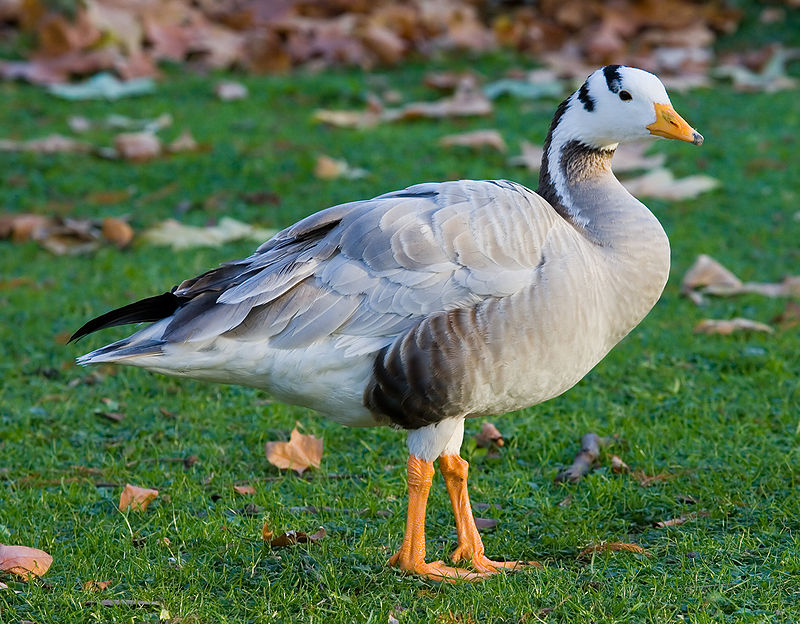
The Bar-headed Goose is an iconic bird of Central Asia, known for its remarkable ability to reach extreme altitudes when migrating over the Himalayas. It breeds in colonies near mountain lakes and winters as far south as India.
During breeding season it lays three to eight eggs at a time in ground nests. This grey goose genus Anser has no other native member species within the Indian region.
Its wings are adapted for high altitude flight, being long and pointed with small “fingers” along their length that help reduce air turbulence during rapid ascent or descent through mountainous regions.
The bar-headed goose’s strong flying skills have made it one of nature’s most impressive avian migrations.Scientific classification:
| Kingdom | Animalia |
| Phylum | Chordata |
| Class | Aves |
| Order | Anseriformes |
| Family | Anatidae |
| Genus | Anser |
| Species | A. indicus |
9. Kozlov’s Accentor
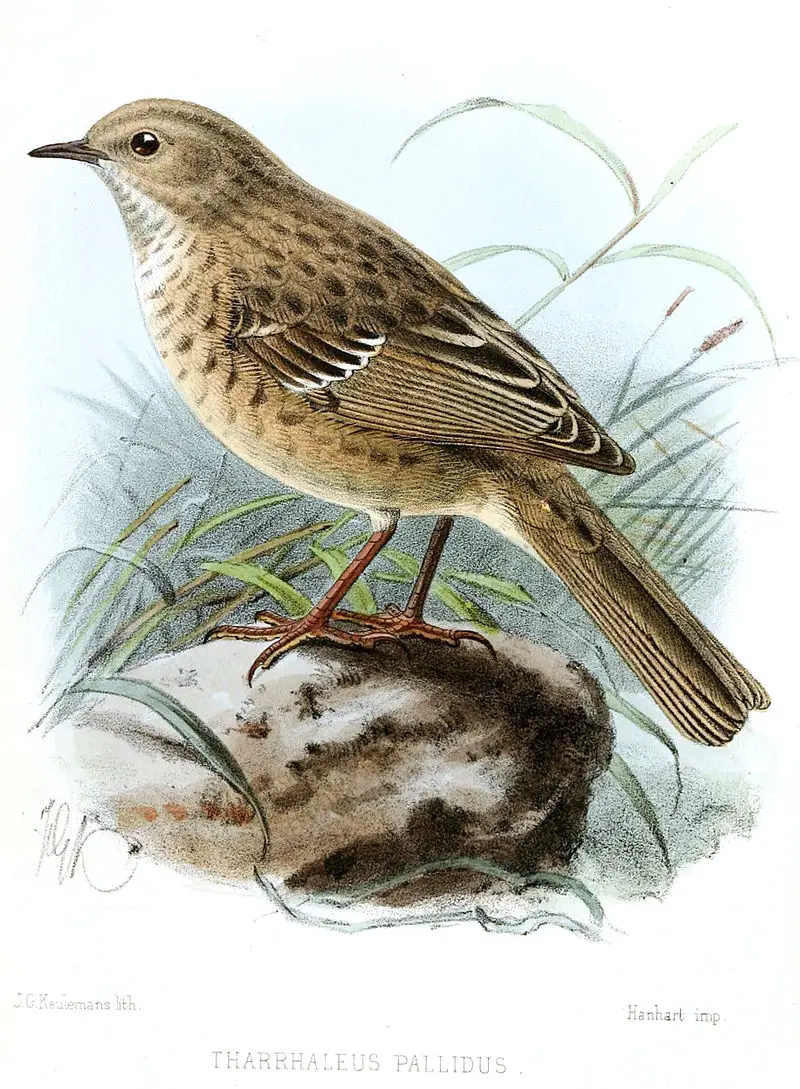
Kozlov’s accentor is a species of bird in the family Prunellidae, found mainly in Mongolia and northern China. It has an olive-brown back with dark streaks on its upperparts and cream colored throat spotted with brown.
The breast is greyish while the flanks are pale buff. This attractive little bird was named after Pyotr Kozlov, who was a Russian explorer that helped discover it in 1902.
He explored remote areas of Central Asia where he collected specimens for scientific research including this beautiful songbird.
They usually inhabit grassy plains near water sources or shrubby hillsides as well as wasteland around settlements which makes them quite easy to spot if you’re lucky enough to find one.Scientific classification:
| Kingdom | Animalia |
| Phylum | Chordata |
| Class | Aves |
| Order | Passeriformes |
| Family | Prunellidae |
| Genus | Prunella |
| Species | P. koslowi |
10. Thick-Billed Warbler
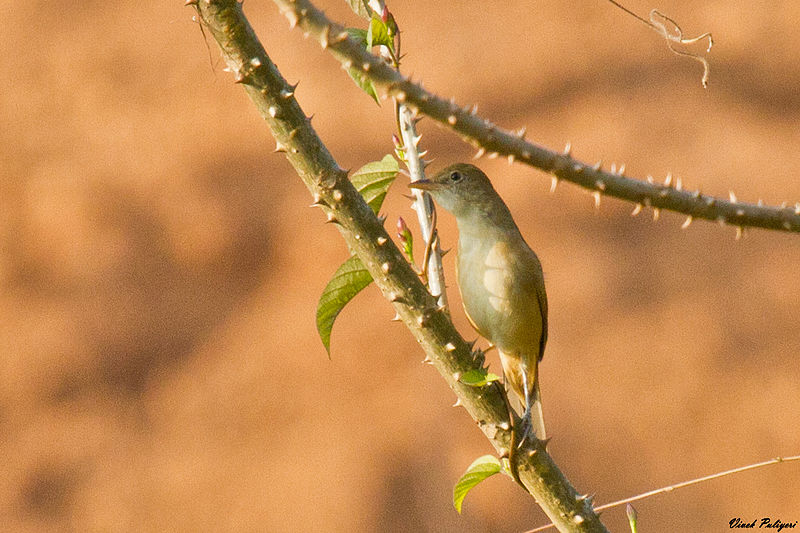
The Thick-billed Warbler is a species of passerine bird found in the temperate east Palearctic region, from south Siberia to west Mongolia. In winter it migrates to tropical South Asia and South-east Asia.
It prefers dense vegetation such as reeds, bushes and thick undergrowth for breeding habitats. The nest is usually built low down in a tree and five or six eggs are laid inside it.
This plump little warbler has an olive brown back with yellowish wings and tail feathers which contrast nicely against its grey head, white throat patch around the bill area plus yellow eyebrows above bright orange eyes.
Its song consists of loud whistles that can be heard up to half a mile away during summer months.Scientific classification:
| Kingdom | Animalia |
| Phylum | Chordata |
| Class | Aves |
| Order | Passeriformes |
| Family | Acrocephalidae |
| Genus | Arundinax Blyth, 1845 |
| Species | A. aedon |
11. Swan Goose
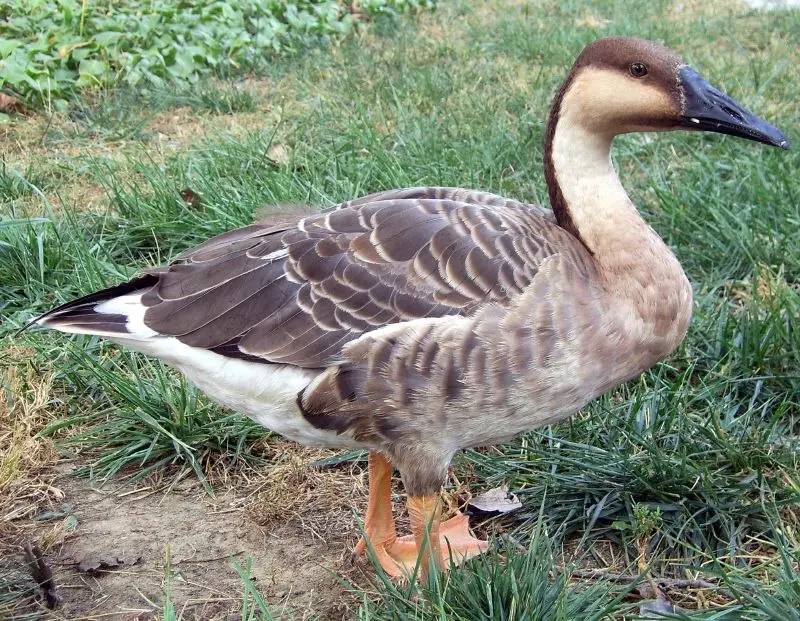
Swan geese are a large species of goose with an impressive wingspan. They have a natural breeding range in Mongolia, northern China and the Russian Far East.
During winter migration they can be seen further south in central and eastern China, though vagrants have been sighted as far away as Japan, Korea, Kazakhstan Laos Siberia Taiwan Thailand and Uzbekistan.
Swan Geese sport white feathers on their heads neck chest back tail flanks underwings and bellies while having black flight feathers that contrast against its overall appearance.
The bill is often pinkish grey or orange-red along with bright yellow legs & feet which make them quite stunning to observe.
While not endangered yet sadly swan geese numbers continue to decline due to hunting for eggs & downy plumage among other things so conservation efforts must remain strong if we want these magnificent birds around for future generationsScientific classification:
| Kingdom | Animalia |
| Phylum | Chordata |
| Class | Aves |
| Order | Anseriformes |
| Family | Anatidae |
| Genus | Anser |
| Species | A. cygnoides |
12. Mongolian Lark
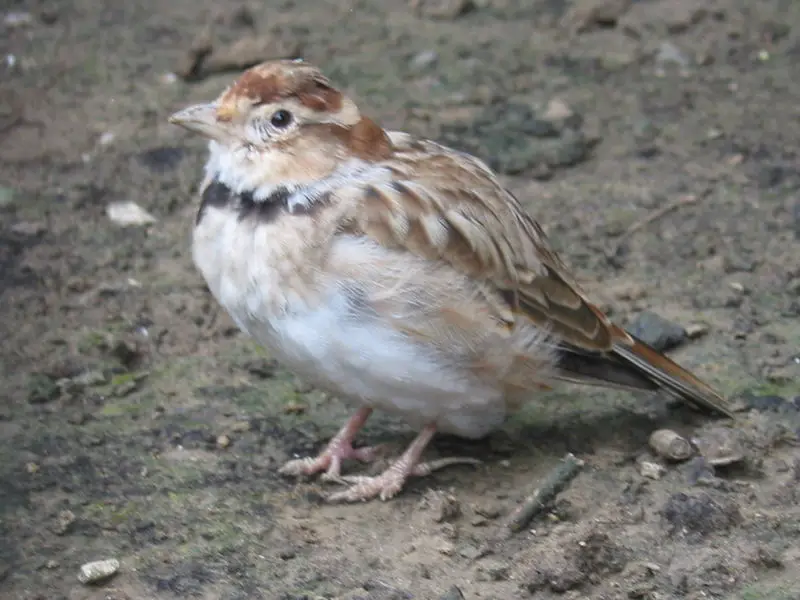
The Mongolian lark is an impressive little bird found in Russia, Mongolia and China. It’s well known for its elaborate singing ability, even into adulthood where it can learn new songs.
The female Mongolian larks don’t sing but have strong song control nuclei with excellent connectivity.
Male Mongolians are particularly talented as they possess a larger left lobe of the telencephalon which helps them remember learned melodies better than any other species of birds.
They also tend to be more vocal during mating season when looking for potential mates. All in all, this beautiful creature has some remarkable abilities that make it stand out from the rest.Scientific classification:
| Kingdom | Animalia |
| Phylum | Chordata |
| Class | Aves |
| Order | Passeriformes |
| Family | Alaudidae |
| Genus | Melanocorypha |
| Species | M. mongolica |
13. Upland Buzzard
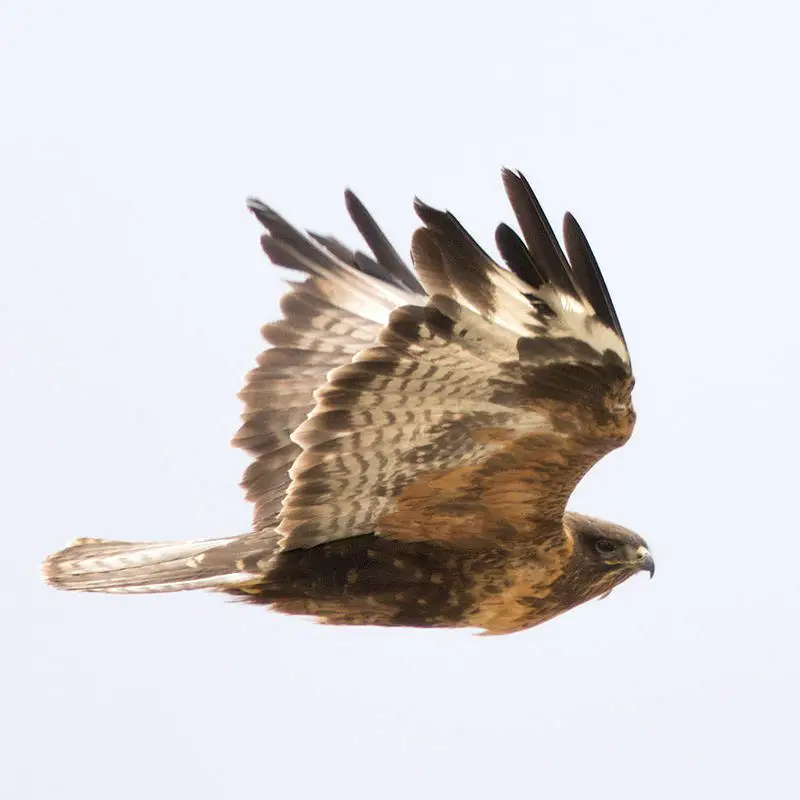
The Upland buzzard is a species of bird belonging to the family Accipitridae.
It is one of the largest species in its genus, found primarily in mountainous and rocky areas throughout Central Asia, northern South Asia and East Asia from Kazakhstan to Korea.
During migration time they typically cover short distances due to the winter snowfall which can make travel difficult for them.
The diet mainly consists of small mammals such as mice or voles but will also eat birds or reptiles if available.
They are usually solitary hunters that search for prey by hovering over their territory looking down with keen eyesight and then swooping down when spotted something edible on ground level below it.Scientific classification:
| Kingdom | Animalia |
| Phylum | Chordata |
| Class | Aves |
| Order | Accipitriformes |
| Family | Accipitridae |
| Genus | Buteo |
| Species | B. hemilasius |
Also Featured In: Native Birds of Kazakhstan,
14. Chestnut Bunting
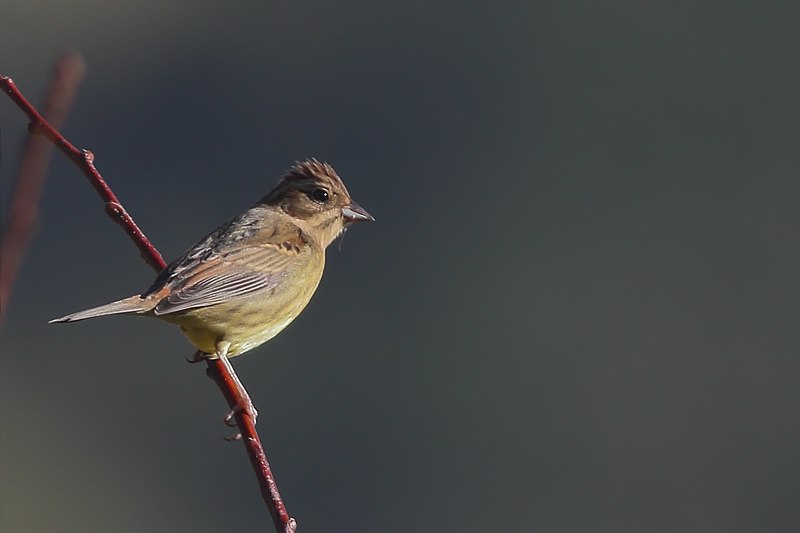
The Chestnut Bunting is a small, passerine bird found in the East Palearctic. It grows to 14-15 cm long and has short tail feathers with little or no white on them.
Breeding males have bright chestnut brown upperparts and head, while their breasts and bellies are yellow with streaks at the sides. Non breeding males look similar but duller in colouration.
The females are sparrow-like looking with streaked brownish underparts as well as a streaky back patterned by black lines over pale greyish buff stripes; they also have an off white eyebrow stripe running from bill past eye towards nape of neck.
During courtship displays, male buntings will sing sweetly from open areas such as trees or bushes to attract potential mates – this song being composed of several metallic notes heard during spring time monthsScientific classification:
| Kingdom | Animalia |
| Phylum | Chordata |
| Class | Aves |
| Order | Passeriformes |
| Family | Emberizidae |
| Genus | Emberiza |
| Species | E. rutila |
15. Isabelline Shrike
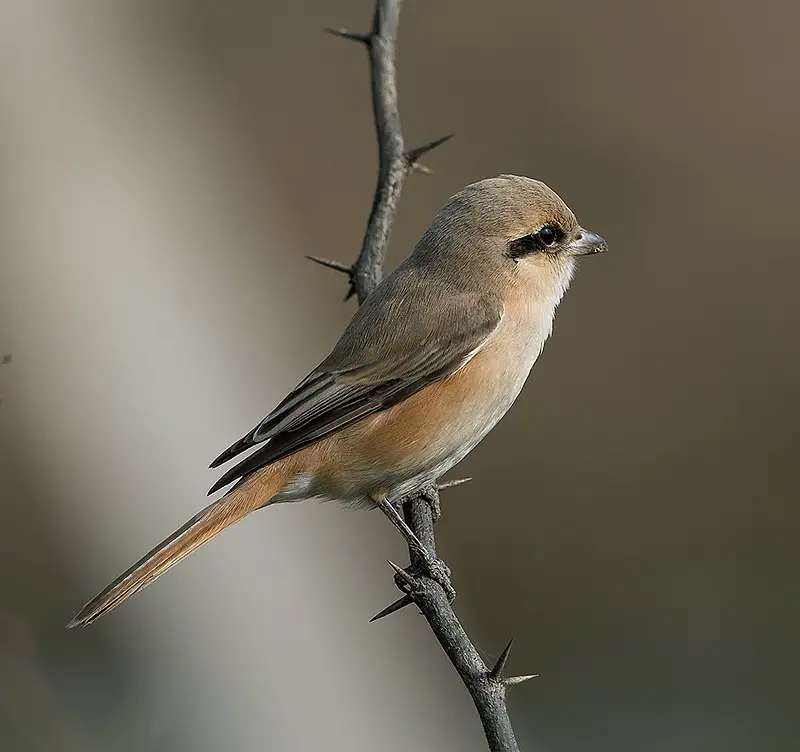
The Isabelline Shrike is a member of the shrike family, Laniidae, and was previously thought to be congeneric with the Red-backed or Red-tailed Shrikes.
It has an extensive range across many countries from Caspian Sea in Western Asia all the way eastward up to Central China’s Qaidam Basin.
During winter months it migrates southwards towards Africa and Arabia for warmer climates.
Its genus name ‘Lanius’ is derived from Latin meaning “butcher”, as its diet consists mainly of small insects and sometimes even lizards or sparrows.
The Isabelline Shrike can easily be identified by its brownish grey coloration along with black wings having white wingtips plus two white bars on each side of their tail feathers.Scientific classification:
| Kingdom | Animalia |
| Phylum | Chordata |
| Class | Aves |
| Order | Passeriformes |
| Family | Laniidae |
| Genus | Lanius |
| Species | L. isabellinus |